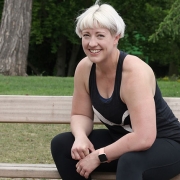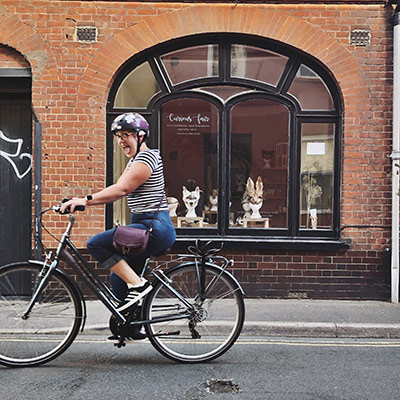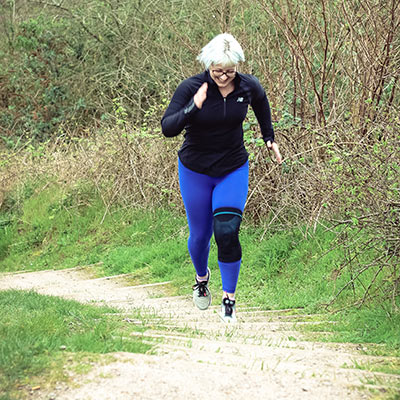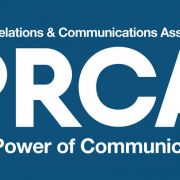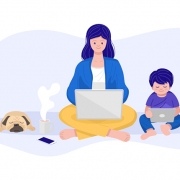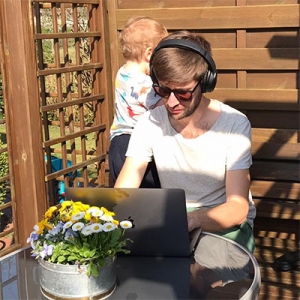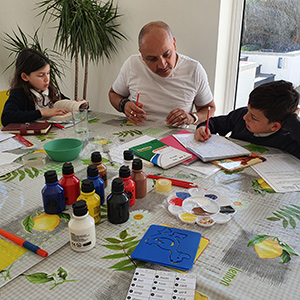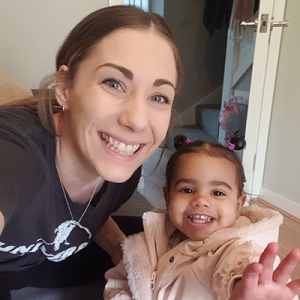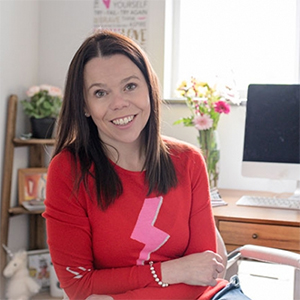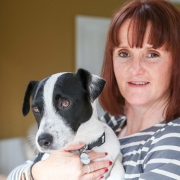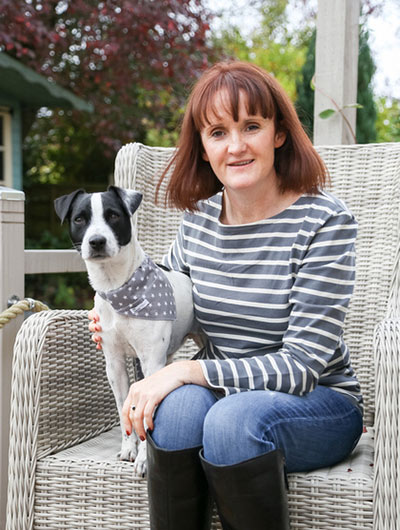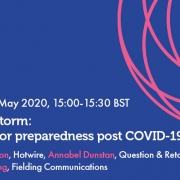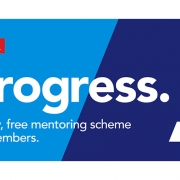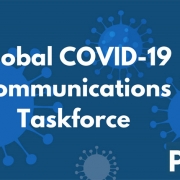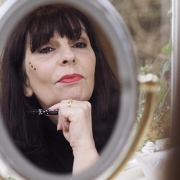Are you struggling to keep up with work while keeping children fed, watered and entertained during lockdown? You’re not alone. A recent Marketing Week and Econsultancy survey of 1,990 of our cousins in marketing across the globe has found that almost half of those with children (46.6%) feel they are working less efficiently than normal.
While 86.7% of those without children can work in a quiet space for at least five hours a day, just 59.1% of those with children under 16 are able to, with 60.4% saying their home situation has interrupted work-related calls.
Concerns about job security are also higher in those with children at home, as well as feelings of ‘deep stress’, but it’s not all bad – parents working from home also had higher levels of focus and being productive.
If the balance of parenting while working from home is something you’re struggling with, take some advice (or simple reassurance) from peers also struggling, and succeeding, through sometimes stressful home working situations…
This is part one, read part two here.
1) Breaks, baths and Joe Wicks
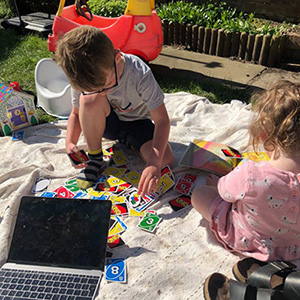
‘We’re attempting to stick to as strict a routine as possible, starting the day, like everyone else, with Joe Wicks (although what happens if he gets coronavirus? We’re all counting on you, Joe) followed by reading, writing, some jumping on the trampoline and eating a lot of oat cakes and M&Ms. All while attempting to Slack and email, which is surprisingly easy to do, actually. This morning I “listened” to an entire book being read by my son while arranging an interview with a client. MULTI-TASKING.’
Lee Simpson, content and client account manager at Fourth Day

‘This is an alien situation for everyone – don’t expect miracles. Compartmentalise your day. Dedicate an hour to clearing through emails and mapping out a to-do list – ideally done before the kids are up, if possible. Secondly, prioritise communication – establish a daily plan and inform your team; my husband and I split the day in two and take it in turns with childcare, so my team know when I am able to respond to emails or be on client Zoom calls.
And take some time out. Once the kids are in bed, don’t jump back onto your laptop. Take an hour to have a bath, eat a decent dinner, go for a jog or read a book – whatever helps you switch off. Burning the candle at both ends won’t benefit us, our kids or our jobs.’
Chloe MacDonagh, senior account manager at Sellers PR

‘The key for us with two kids (nine and six) has been a set routine. When everyone in the house knows what they have to be doing and when, competing priorities are easier to manage. The kids value having time off from parents and we value having time to focus fully on work. A simple shared Outlook calendar seems to be doing the trick!’
Leor Franks, chief marketing officer at Augusta Ventures
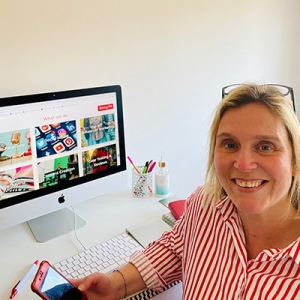
‘I’m a single mum to my 15-year-old daughter, who was recently been diagnosed with learning differences. I feel completely inadequate to teach, however together we are learning via BBC Bitesize and other online tools and I’m certainly developing my skill in patience.
I have set working hours each day – 8am until 2.30pm (during this time, my darling teenager catches up on her beauty sleep). After a well-deserved cup of tea, I sit down with her and we crack on with schoolwork for a couple of hours. By 5pm, I’m ready for bed!
We’re a team of two who have managed to compromise and find a routine that works for us both. Prior to lockdown I hardly saw my daughter, so I am thoroughly enjoying spending more time with her.’
Jo Lowe, PR director at Spring PR
2) Breaks for everyone, in fact
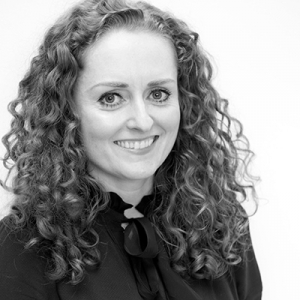
‘Breaking the day up into chunks helps, you’re never going to sit down and do three straight hours of work, but you can do an hour, then have a break to do something with you child or get them a snack (which they seem to need all day long!) – that helps.
Sit them at the table with you when you’re working and give them colouring, painting or Play-Doh – set them a little challenge, too.’
Sarah Twyman, client services director at Smoking Gun

‘As a single mum of a lively two-year-old, running a PR agency in lockdown has been an eye opener. It took time to find our feet, but now we are further into lockdown, we have a little routine in place with things that seem to work for us both. I aim to limit screen time (although this doesn’t always work!) and replace it with indoor exercise or arts and crafts. We also were introduced the Caribu app for video calls with family and friends while the children can read interactive books or draw pictures on the phone with each other.
I make sure I allow time for a good lunch and down time is key. When Zuri takes her nap, I jump on my Peloton bike – it’s a must for my wellbeing and mental health. And if all else fails, an ice lolly and Paw Patrol is a great way to get through a Zoom meeting with clients!’
Lucy Dartford, managing director of We are Lucy
3) Using what’s online

‘We’re really lucky that a lot of the baby classes my daughter has been used to attending are now available online – TinyTalk baby signing is her particular favourite – so we are able to keep some sort of normality for her too.’
Annie Brafield, account director at Cartwright Communications

‘I won’t lie, it’s hard work. I have a 10-year-old son, who only has a desire to play on his PlayStation and watch Netflix, so we had to set rules early on (we were self-isolating before the schools closed, too). We try and start everyday around 9am with #PEwithJoe, like a lot of the country, and we found a great app early on called IXL to help on the English and Maths he should be learning in year five. Who knew how much English had changed?? I’m head of PR, and write content daily, but sometimes I just don’t have a clue with some of these terms – concrete and abstract nouns, anyone?’
Claire Beaumont, head of PR at Igniyte

‘The Moshi: Sleep and Mindfulness app has been particularly useful over the last few weeks. Goldie’s Five-Minute Brain Break has become my go-to when I need the children to simply calm down. The ‘brain break’ works as a five-minute wind-down technique – a great way to install moments of calm throughout the day for little ones, as well as allowing parents like myself to take a step back and refocus before the chaos inevitably starts again!’
Natalie Linder, PR & digital content manager at Luminous PR
4) Using ‘local’ resources

‘I had a little meltdown at the prospect of working from home as a single parent with a very demanding nine-year-old, 15-year-old and autistic 19-year-old. However, my 19-year-old sat down and constructed lesson plans for my nine-year-old and took over the childcare! He’s teaching her about Egyptians as we speak, and I’m at my desk!’
Martina Mercer, freelance PR and editor of Sunday Woman
5) Investing in the right tech

‘I run my agency remotely, so working from home isn’t new to me, but having our littles ones out of nursery and with no in-laws available right now, it is a very different household. The main problems I’m running into are the noise and time it takes to get back to work once I pop out of the third bedroom for a break. To help with these, I’m using my headphones a lot more, which helps stop me getting sucked into tantrums or the boredom elsewhere in the house…’
Darren Kingman, founder of Root Digital
Find more advice (and confessions) from other PRs balancing family with working from home in Part two here.






